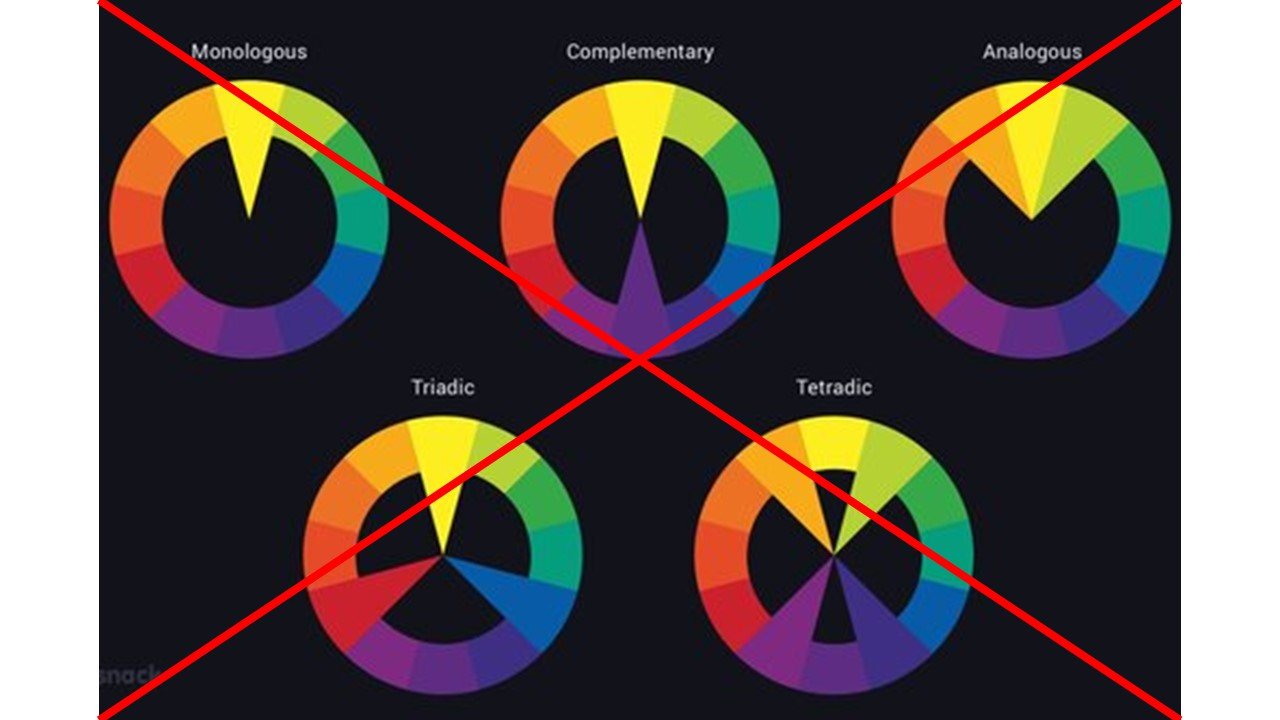Misconception: There are simple rules that guarantee colour harmony
Concept Corrected: Colour harmony is complex and subjective. Universal rules are not possible to establish.
Colour harmony is a highly complex subject! Today’s ‘rules’ on how to establish harmonious combinations stem from historical studies, which are often over-simplified.
We are fascinated by colour: it helps us communicate and make sense of our world. We are profoundly impacted by colour: it affects our moods and emotions. However, it is extremely difficult to prove any universal human response to specific colours. The way we respond to different colours and colour combinations is highly subjective, much like the way we respond to different types of music. Historically, certain rules about how certain colours behave and work together have been developed, which often form a core component of colour education. However, studies on the universal nature of colour harmony ‘rules’ are conflicting. Certain colour combinations may be harmonious to some, yet disharmonious to others. Our language, cultural background and local environment all play a role in how we respond to colour. Colour and colour combinations do impact us as humans, but there are no universal rules. Colour harmony is individual and subjective.





